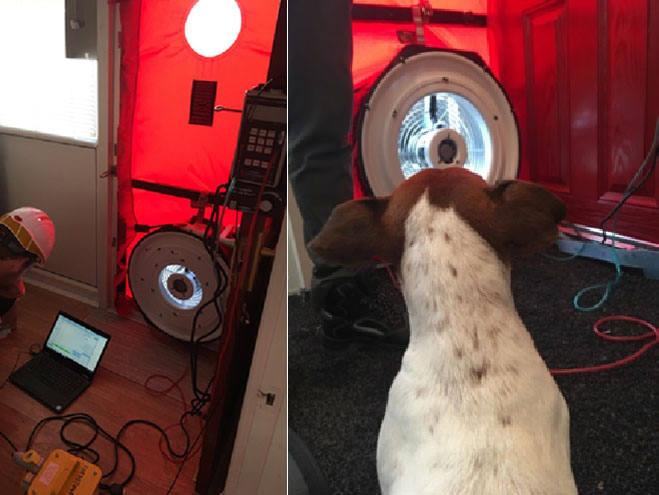The Fortem technical team were on the road recently measuring the airtightness of houses in Hull.
Fortem are carrying out energy improvement measures, primarily adding External Wall Insulation (EWI), in thousands of homes across the city. The insulation will make houses warmer, improve energy efficiency and regenerate neighbourhoods.
Airtightness is a key feature of homes; too leaky and homes will be cold and expensive to heat, too airtight and there could be problems with damp and mould.

Blower Door
Damp and mould risk has to be carefully considered when adding insulation. This is because condensation forms on cold surfaces, which can be caused if there are gaps in the insulation which provide a ‘thermal bridge’ for heat to leave the building.
There are lots of sources of moisture in a house, in addition to washing and cooking, people breathe out around 3 litres of water per day. Ventilation is necessary to move this moisture out of the building.
Airtightness is measured using a ‘blower door’, so called because it is a door with a big fan in it. The door replaces an external door and either blows air into (pressurising), or sucks air out of the (depressurising) house. All the air that is forced through the fan must leave the house somewhere; by carefully measuring this airflow the leakage through all parts of the house (‘the airtightness’) is measured.
The airtightness measurements the team were carrying out in Hull were part of the process of designing the ventilation solution. By understanding the amount of air movement through the building fabric it is possible to better determine how much extra ventilation is necessary, without introducing unwanted additional cold air.
In addition, the testing provides a relaxed setting to communicate the importance of airtightness to residents and the airflow can be used to highlight particularly leaky spots.
In total the airtightness was measured in 14 houses, with an average airtightness of 12m3/h.m2. For context, this is slightly higher than the national average and the mandatory maximum airtightness for new buildings, which is 10m3/h.m2 (a lower number means the building is more airtight and hence has less heat loss). The airtightness improved slightly after the addition of the External Wall Insulation, to 11m3/h.m2.
The results show that these houses are not particularly airtight, and hence are at a lower (but not non-existent!) risk of condensation and mould growth. This allows us to design an appropriate ventilation solution, avoiding unnecessary ventilation and disruption for the residents.

